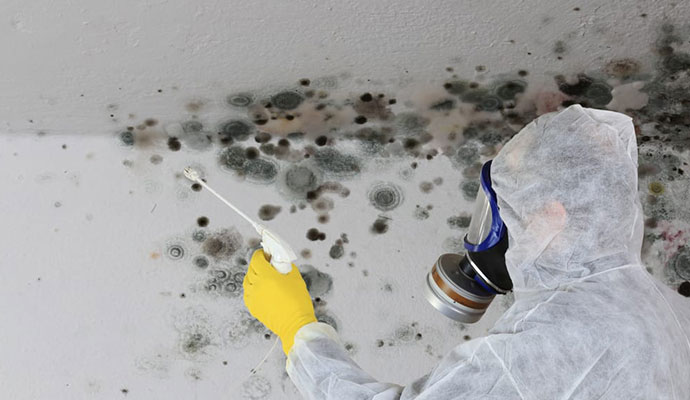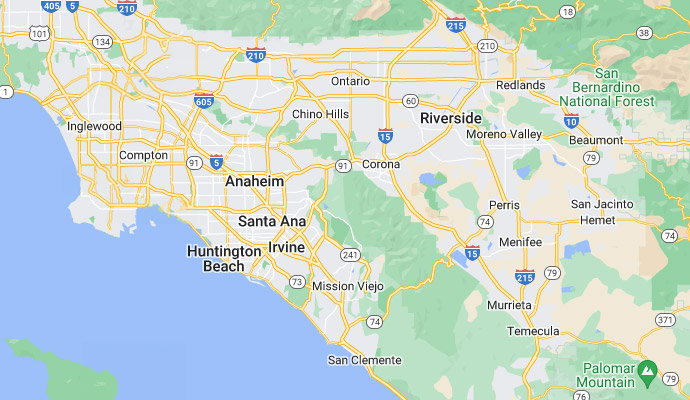
Why Do We Need a Mold Inspection and Removal in Schools?
Mold is a fungus constituting tiny organisms. Mold presence is a blessing for the outdoors as they play a crucial role in decomposing dead leaves and trees.
You may find mold growing in dark and damp places. Mold can damage your home and also causes health issues for you.
Let’s read more about the mold types you may find in your home more, the potential effect on your health, and how to get rid of them.
Click Here for Mold Damage Service.
What is Mold?
Mold is typically a fungus constituting tiny organisms. Mold presence is a blessing for the outdoors as they play a crucial role in decomposing dead leaves and trees.
However, these fungi thrive indoors fast and alarmingly in damp conditions to release spores. Inhaling mold spores in large numbers can trigger health problems.
Outside Mold Vs. Inside Mold:
1. Outside Mold:
Outside mold helps to break down plant and animal matter. Outdoor molds release tiny spores that float through the air. The spores may enter your home via:
- Windows
- Doors
- Clothing and shoes
- Pets
2. Inside Mold:
Inside molds can’t grow unless conditions are right. The spores can latch on to various materials, including papers, carpets, and woods. Mold prefers places with little light and lots of moisture, such as:
- Sinks
- Bathtubs
- Showers
- Near leaky pipes
- Around windows
- In basements, crawl spaces, and attics.
Different Types of mold:
Different types of mold can grow in the same area. You can’t differentiate the mold without testing. Fortunately, you don’t need to know the kind to get rid of it. The most common indoor molds are as follow:
- Cladosporium: This kind of mold is green, brown, or black. Cladosporium grows in both cool and warm places. It’s most often found on carpets, wood, or fabrics and in cooling and heating ducts.
- Penicillium: This fuzzy mold is green, blue, or yellow. It’s often found under carpets, basements, and insulation.
- Aspergillus: Aspergillus is white, green, or gray with dark spots. Also, Aspergillus has a powdery look. This mold type doesn’t need ventilation. It thrives in walls, fabrics, basements, and attics, and on dry foods.
- Alternaria: This mold is white with black spots. It grows in fabrics and wallpaper, near windows and air conditioners, and kitchens and bathrooms.
- Aureobasidium: This type of mold is pink with black spots. It’s most commonly found on walls, wood, grout, and caulking.
- Stachybotrys chartarum: This mold type is called black mold too. This greenish-black mold usually is found on fiberboard, paper, and gypsum board.
- Trichoderma: This mold type is creamy-white. This mold may turn green if it releases spores. It’s often found on windows, wood, and in bathrooms and kitchens.
5 Signs That Imply You Have Mold In Your House
Mold starts as a bit of a spot but expands quickly. You usually may notice it early. Unless it grows in an out-of-the-way place.
Mold can be white, black. It may appear cottony, powder, or velvety.
If you notice a spot and you aren’t sure if it’s just a splotch of dirt or an old stain, here’s how to detect if it could be a type of mold:
- It has an earthy and musty smell
- There’s moisture nearby
- You see cracking or warping of any material it’s growing on
- Unchecked, mold will continue to grow. Dirt and old stains won’t.
Can house mold be harmful to your health?
House mold won’t necessarily make you ill. But mold has the potential to cause specific health issues for you:
Touching mold spores can cause allergy symptoms such as:
- Eye irritation
- Runny nose and congestion
- Sneezing
- Coughing
- Sore throat
- Skin rash
- Headache
- Lung irritation
- Wheezing
You may be at risk for complications such as infection if you have conditions such as:
- Asthma
- Allergies
- Compromised immune system
- Chronic obstructive pulmonary disorder (COPD)
In some people with an allergic reaction to mold, such as asthma, may trigger an attack.
Exposure to a large amount of mold may cause a more severe reaction. This type of exposure is due to occupational or workplace hazards rather than exposure to mold in your home.
How can you get rid of mold
You can get rid of house mold yourself, in many cases. Mold can be removed with:
- Soap and water
- Commercial products
- A bleach solution of 8 ounces of bleach per 1 gallon of water
How can you prevent mold
Molds are almost everywhere. They are part of the world. It’s not possible to get rid of molds completely. But there are some solutions to make your living place inhospitable to mold. This needs taking the following steps:
- Try to fix water leaks as soon. Clean up extra water. Use fans to dry the wet area
- Repair or replace windows that leak
- Maintain low humidity in your living place with air conditioners. Change the filters and service your air conditioners
- Don’t carpet laundry rooms, bathrooms, and basements
- Keep your home ventilated. When showering, use exhaust fans or open the windows
- Use cleaning products that can kill mold
- Never leave wet clothes or towels in a pile
- Assure water drains away from your house.
You may not notice it, but mold may be lurking within your house. Be aware of these signs:
- Water damage
- Leaks
- Humidity
- Condensation
- Rust
- Warping
- Deterioration
- Strange odo
- Health problems
- Visible mold.
Mold in your house doesn’t always cause health issues, but it should permanently be removed. Molds can cause damage to your home. They can lead to your nose, eye, lung, and throat irritation.
Some home maintenance chores can make it harder for mold to grow indoors. If you happen to have mold spots in your house, you can take steps to remove the mold by yourself.
But if you have respiratory problems or a big issue, you’re better to call a professional contractor who may safely remove mold and make the necessary repairs.
Mold Remediation in Orange County California has become a major concern for homeowners, tenants, and property managers.
DKI Restoteck experienced and professional contractors at Orange County will safely remove and abate mold for good as soon as you Call Us.












